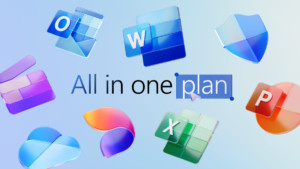Many Windows Users Appear Uninterested in Copilot

Understanding User Sentiment Towards Windows Copilot
Overview of Windows Copilot
Windows Copilot is an innovative tool embedded into the Windows operating system, designed to enhance user experience through AI-assisted features. Launched with the goal of providing practical and intuitive functionalities, Copilot employs machine learning to streamline various tasks, such as scheduling, reminders, and even handling complex queries. However, recent reports suggest that user engagement and interest in this feature are lacking.
User Feedback on Windows Copilot
Despite the advanced technology backing Windows Copilot, several surveys and polls indicate that many users are indifferent or even skeptical about its utility. Below are some observations regarding user sentiment:
- Limited Interest: A substantial number of users expressed that they have not seen a significant need for Copilot in their daily computing tasks.
- Simplicity Preference: Many Windows users prefer simpler, straightforward tools that do not add unnecessary complexity to their experience.
- Concerns Over AI Implementation: Some users worry about privacy issues and data handling, expressing concerns about integrating an AI tool into their daily routines.
Reasons Behind the Lack of Engagement
1. Complexity Over Simplicity
Windows users often favor software that is intuitive and easy to use. Copilot’s comprehensive features, while powerful, can be perceived as complicated, which might deter users. Many individuals prefer traditional methods of interaction and feel overwhelmed by additional AI capabilities.
2. Reliability and Performance
Another critical factor is how reliable and functional the AI performs in real-world situations. If Copilot does not consistently deliver useful results, users may lose interest and question its value. A tool that is expected to simplify tasks should also perform effectively; otherwise, it risks becoming just another software integration without purpose.
3. Awareness and Education
The awareness of Copilot’s features plays a significant role in user adoption. Many users may be unaware of the full potential of the tool, contributing to the perception that it is unnecessary. Without effective informational campaigns and tutorials, users might not engage with the tool meaningfully.
Potential Improvements for Windows Copilot
To increase user acceptance and engagement, Microsoft could consider several enhancements for Windows Copilot:
1. Streamlining Features
Reducing the complexity of Copilot by streamlining its features could make it more appealing. Focusing on core functionalities that directly address user needs could enhance the user experience.
2. Enhanced User Education
Creating comprehensive and easy-to-understand educational content, like video tutorials or interactive guides, could help users understand how to use Copilot effectively. Informative campaigns could demystify the AI’s capabilities and help users integrate it into their routine.
3. User Feedback Mechanisms
Implementing robust channels for feedback could encourage users to share their thoughts on Copilot. This input can guide future improvements, ensuring the tool aligns with user expectations and needs.
Conclusion
Windows Copilot holds significant potential but faces challenges in user adoption. By addressing concerns and making improvements, it could become a valuable tool for Windows users seeking efficiency and assistance in their tasks.
Final Thoughts
Being attuned to user preferences and addressing concerns about complexity and reliability could lead to an increased interest in Windows Copilot. Companies need to recognize the importance of user feedback and adapt their tools to better serve the community. Through ongoing development and engagement, Copilot could evolve into a widely embraced feature among Windows users.






